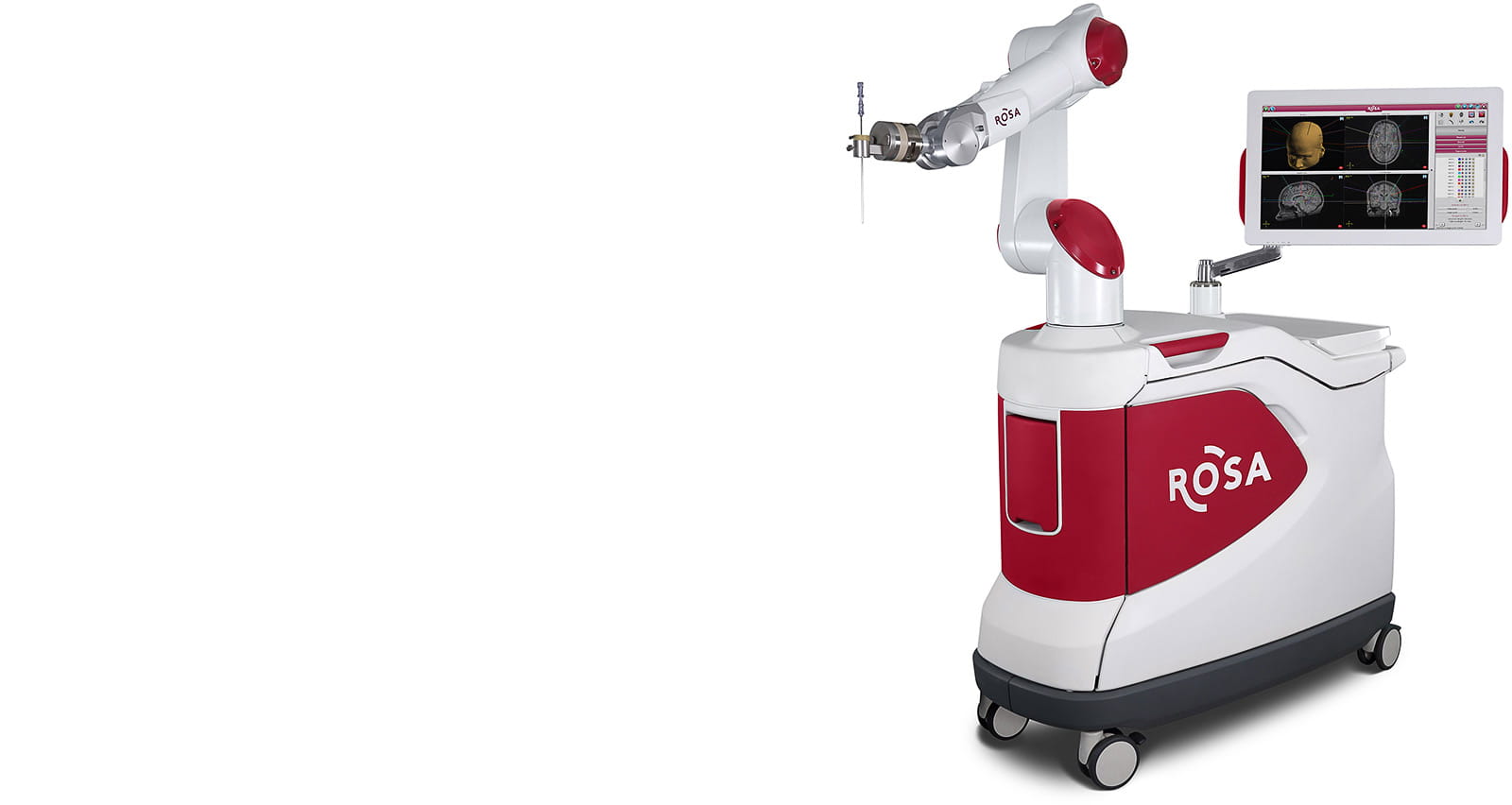
ROSA ONE Brain (Robotic Stereotactic Assistance) in Neurosurgery
ROSA One Brain is a surgical system that uses robotic technology to help surgeons plan and perform complex neurosurgical procedures for treating epilepsy, movement disorders and brain tumors.
The platform allows surgeons to perform minimally invasive procedures without having to open a patient’s skull (craniotomy), as other traditional methods require. ROSA ONE Brain also reduces operating times by half (or more) while improving surgical accuracy.
Your health is important. Get expert care.
Offering in-person and virtual visits. Call 440-860-2177 today.
ROSA ONE Brain Robotic Neurosurgery: An Overview

Neurosurgery typically requires a craniotomy, in which a portion of the skull is removed to give the surgeon access to the brain. An invasive procedure, craniotomy may cause pain, scarring and long recovery times.
ROSA ONE Brain allows surgeons to provide minimally invasive procedures with faster recovery times, improved comfort and other benefits. The platform is specifically designed for stereotactic neurosurgery, a type of neurosurgery that uses 3D imaging to precisely target abnormal tissue deep inside the brain.
The technology allows a surgeon to create a 3D map of a patient’s brain to precisely plan their surgery. During the procedure, the robotic arm provides an unmatched degree of precision, flexibility and safety to treat tissues deep within the brain.
What Neurological Procedures Can Be Done With ROSA ONE Brain?
ROSA ONE Brain can be used for a variety of procedures, including epilepsy surgeries, functional neurosurgeries and endoscopies. Specific procedures done with the system include:
- Stereo Electroencephalography (SEEG)
- Deep Brain Stimulation (DBS)
- Stereotactic Biopsy
- Laser Interstitial Thermal Therapy (LITT)
- Responsive neurostimulation
- Ventricular Endoscopy
- Transnasal Endoscopy
Patient Benefits of ROSA ONE Brain
ROSA ONE Brain robotic neurosurgery provides a number of benefits for patients, including:
- Better outcomes with improved surgical accuracy.
- Enhanced patient comfort through minimally invasive techniques.
- Faster procedures with reduced anesthesia time.
- No large scars or need to shave the patient’s head.
What Happens Before Neurosurgery with ROSA ONE Brain?
Prior to your procedure, you will have an MRI (with or without a CT scan) so your surgeon can plan your surgery. If your surgery is for epilepsy, you may get 10 to 20 small wires (called leads or electrodes) implanted into your brain. This step – called brain mapping – will help your neurologist and surgeon pinpoint the parts of your brain that are responsible for your seizures.
What Happens After Neurosurgery With ROSA ONE Brain?
Postoperative recovery and follow-up care depend on the type of procedure performed. However, your recovery time will be significantly faster than procedures performed with open skull surgery.
Meet the Team
Michael Staudt, MD
- Neurological Surgery
-
Cleveland (0 mi.)
Cleveland (0 mi.)
Make an Appointment Today
Your health is important. Get expert care.
You can book an appointment with a UH Neurological expert close to home by calling 216-844-2724.
Virtual visits and virtual second opinions also are available. Learn more about virtual visit.



